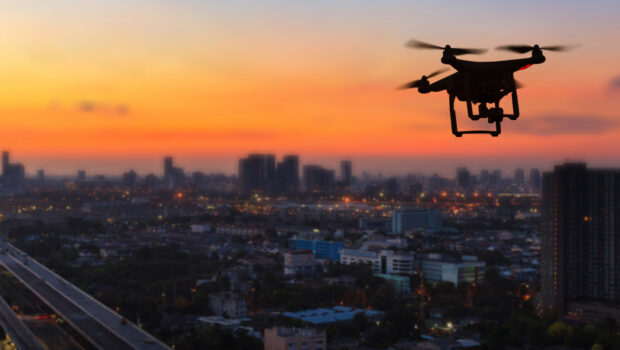Long Range FPV Drone: Things You Need to Know before You Build
Table of Contents
1. The Best Long Range FPV Drone Kit
1.1 The Best Motors for Long Range FPV
1.2 The Batteries for Long Range FPV
1.3 The Frame for Long Range FPV
1.4 The Propellers for Long Range FPV
2 Long Range FPV Tips and Tricks
2.1 Conduct thorough Pre-Flight Checks
2.2 Choose a Safe and Open Flying Area
2.3 Always Maintain Line of Sight
2.4 Keep an Eye on the Battery Level
2.5 Use a GPS Tracker
2.6 Be Aware of Weather Conditions
3. Is Long Range FPV Flying Legal in Your Country?
MEPS Long-range FPV drone has been gaining popularity among the FPV community more quickly than ever before because to the recent introduction of better and more affordable radio connection and FPV technology. To experience FPV in its purest, most unconstrained form, more pilots are straining their equipment to the breaking point.Long-range FPV poses entirely new challenges as you advance in your knowledge of the technology. You should take into account more than just your flying abilities. It can turn into a small engineering problem. You need a sturdy construction with the best parts, such as MEPS branded parts. Before you begin your construction, read these top tips if you have been wanting to try long-range FPV and have finally made up your mind to do so.
1. The Best Long Range FPV Drone Kit
1.1 The Best Motors for Long Range FPV
The most effective motors for long-range FPV are those that provide you with the longest flight times and greatest distance traveled. The weight of the FPV drone that the motors must lift, the weight of the propellers that the motors must spin, the size of the motor, and the motor’s KV value must all be balanced when choosing a motor. Here I would like to recommend MEPS motors.
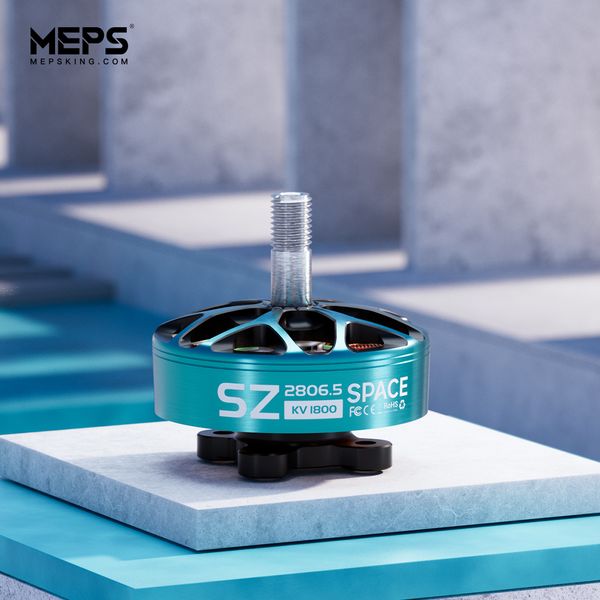
- Longer Flight Duration – Every second of FPV flight counts, and SZ2806.5 helps to stay in the air for longer periods of time.
- Larger FPV Frame Load Capacity – Capable of handling heavier payloads, like larger cameras, without sacrificing flight stability.
- High Efficiency & Low Heat Generation – Extend the life of the drone battery, more reliable and less likely to overheat or fail.
- Lightweight & Impact Resistance – Better overall performance, tends to last longer and perform more consistently.
- Special for Long-Range Aerial Photography – Low noise and smooth operation, help capture clear, stable footage.
- KV options: 1300&1800
- Frame size recommend: 6-8 inch
SZ2306 5Inch Freestyle Motor
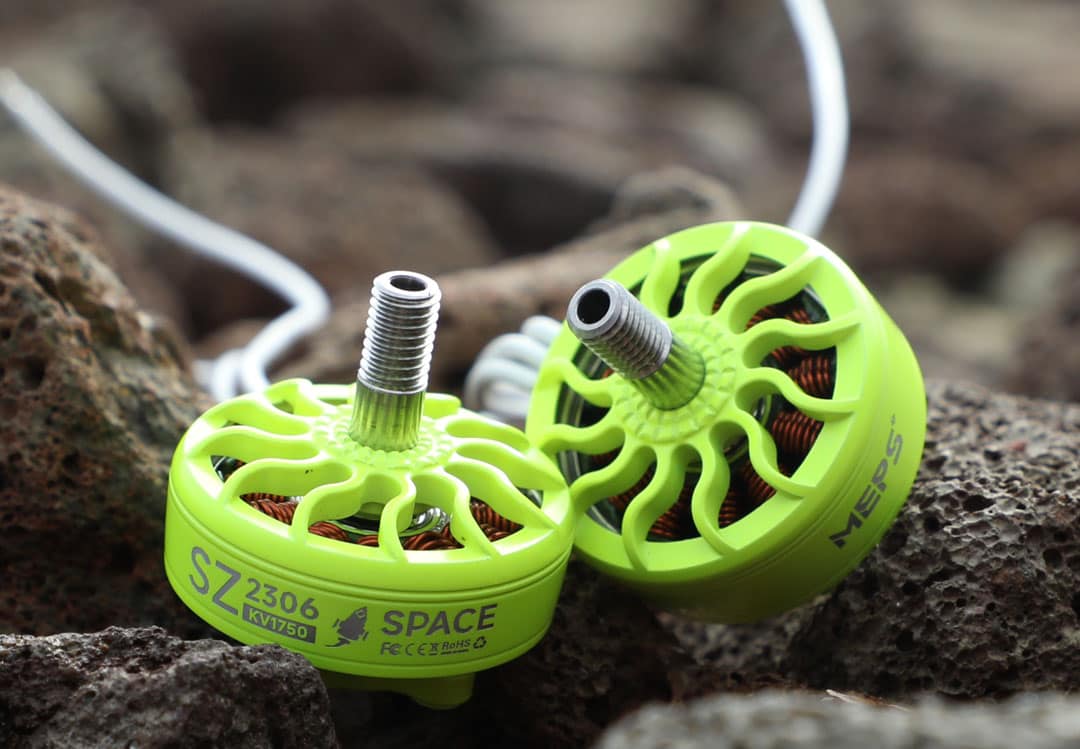
- Freestyle Specialist- Provides ample power and stability for fast-paced flying, making it an ideal choice for those who want to push freestyle flying to the next level.
- Innovative Design – Remarkable durability with a uni-bell covering, and super low cogging torque, achieves the perfect combination of performance and aesthetics.
- Better Material – CT4 reinforced titanium alloy shaft and N52SH arc magnets increase efficiency and shorten motor response time, allowing the motor to run as smoothly as silk.
- Individually Pre-factory Test – Ensure quality and reliability. Super dynamic balance control that provides a smooth and responsive flying experience.
- Three KV Options Available (1750, 1950, 2450) – Different KVs match different batteries and propellers for different flying styles.
- Frame size recommend: 5 inch
1.2 The Batteries for Long Range FPV
When it comes to long-range FPV, lithium ion (Li-ion) batteries are currently your best bet for covering the widest potential area.Compared to lithium polymer (LiPo) batteries, lithium-ion batteries have a higher capacity per unit of weight. The amount of effort the motors need to do to keep the quad in the air will be reduced if the weight is decreased without affecting the quantity of energy stored in the battery. As a result, the battery’s current draw will be reduced, extending flying duration and broadening the range.
For those interested in ultra-long range and seeking to break records for the longest range, lithium-ion batteries will be the ideal option. However, it may be worthwhile to take into account LiPo batteries for people who want to attain medium to long-range, perhaps for the aim of creating cinematic footage.
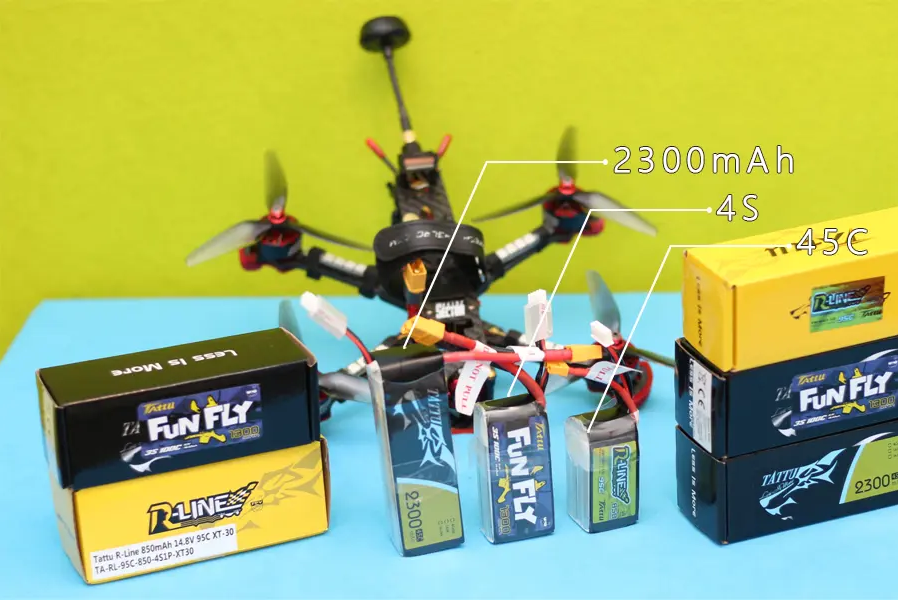
1.3 The Frame for Long Range FPV
The lightest and largest frame you can practically use for your project is the one that is best for long-range FPV. For long distance, a lighter frame is quite advantageous because it means the motors need less power to keep the quad flying. Longer flying times and greater distances are both directly correlate.
The most common option is a 7 inch frame since it provides the best balance of size, weight, price, and usefulness. Excellent outcomes have, however, also been shown with smaller frame sizes, including the more typical 5 inch size.The 6 inch frame gives the advantages of a 5 inch frame with better efficiency, and the 7 inch frame is likely to be the ideal frame for long range FPV.
Here are the advantages and disadvantages of the three sizes of frame:
5 Inch Frame
- Most common frame size
- Slightly smaller than a 6 inch frame
- The most popular frame size in general
- Efficiency is not quite as good as a 6 or 7 inch setup
6 Inch Frame
- More efficient
- Suitable for a 5 inch or 6 inch propeller
- More lightweight and cheaper build cost than the 7 inch frame
- Comparable durability to a 7-inch screen with less expensive battery requirements
- Less choices of 6 inch frame
- Less versatile than a 5 inch frame
7 Inch Frame
- Carries more weight.
- Large props, greater efficiency
- Longer frame can carry more batteries
- Longer frame can carry more batteries
- Longer frame can carry more batteries
1.4 The Propellers for Long Range FPV
Propellers must produce enough push to keep the drone in the air while using the least amount of power feasible if they are to travel long distances. Compared to racing or freestyle, it has a completely different objective. The effectiveness of delivery, not the highest thrust, is what counts.
You have to think about a few points when you choose a propeller:
- Typically, larger propellers are more efficient than smaller ones.
- Lower pitch propellers frequently have greater efficiency than high-pitched, aggressive ones.
- Due to the high energy consumption of vortexes at the tips of the blades, two-bladed propellers should be more effective than three- or four-bladed ones. Less vortexes result from fewer blades. Less vortexes result in less energy loss.
- For the same reason, “pointy” blade tips of propellers should be more effective than “bull-nose” tips.
- Long-range flight is better served by narrow propellers than by broad, “paddle”-style props. It’s because induced drag is reduced when an airfoil has a high aspect ratio (narrow but long) compared to a low aspect ratio (wide but short). After all, gliders do not appear as they do by accident.
SZ4942 Racing Drone Propeller
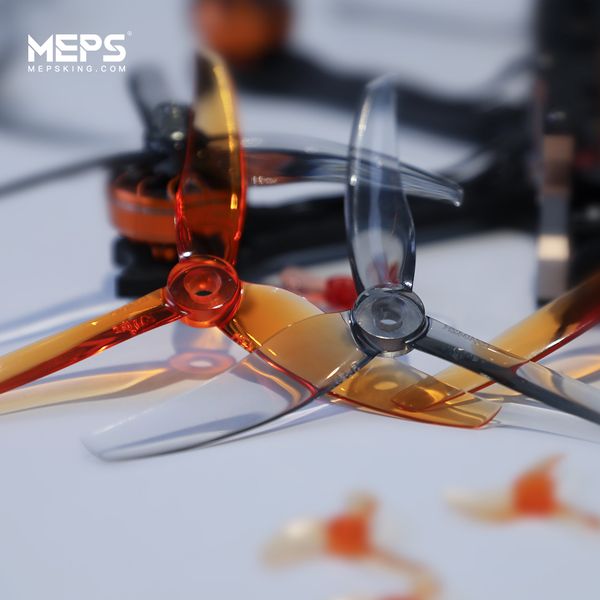
- Special blade design provides greater thrust
- Smooth surface reduces wind resistance
- Polycarbonate material with better durability
2 Long Range FPV Tips and Tricks
2.1 Conduct thorough Pre-Flight Checks
Make a complete pre-flight inspection to make sure your drone is in good operating order before you take off. Make sure everything is secure and working correctly by checking the battery level, the propellers, and all other parts. This will assist in avoiding any problems during flight.
2.2 Choose a Safe and Open Flying Area
Decide on a safe, open location to fly your long-distance FPV drone in when making your flight plans. Avoid flying over densely populated areas or close to electricity lines if possible. Locate a sizable, uncluttered area with few obstacles, such a park or open field.
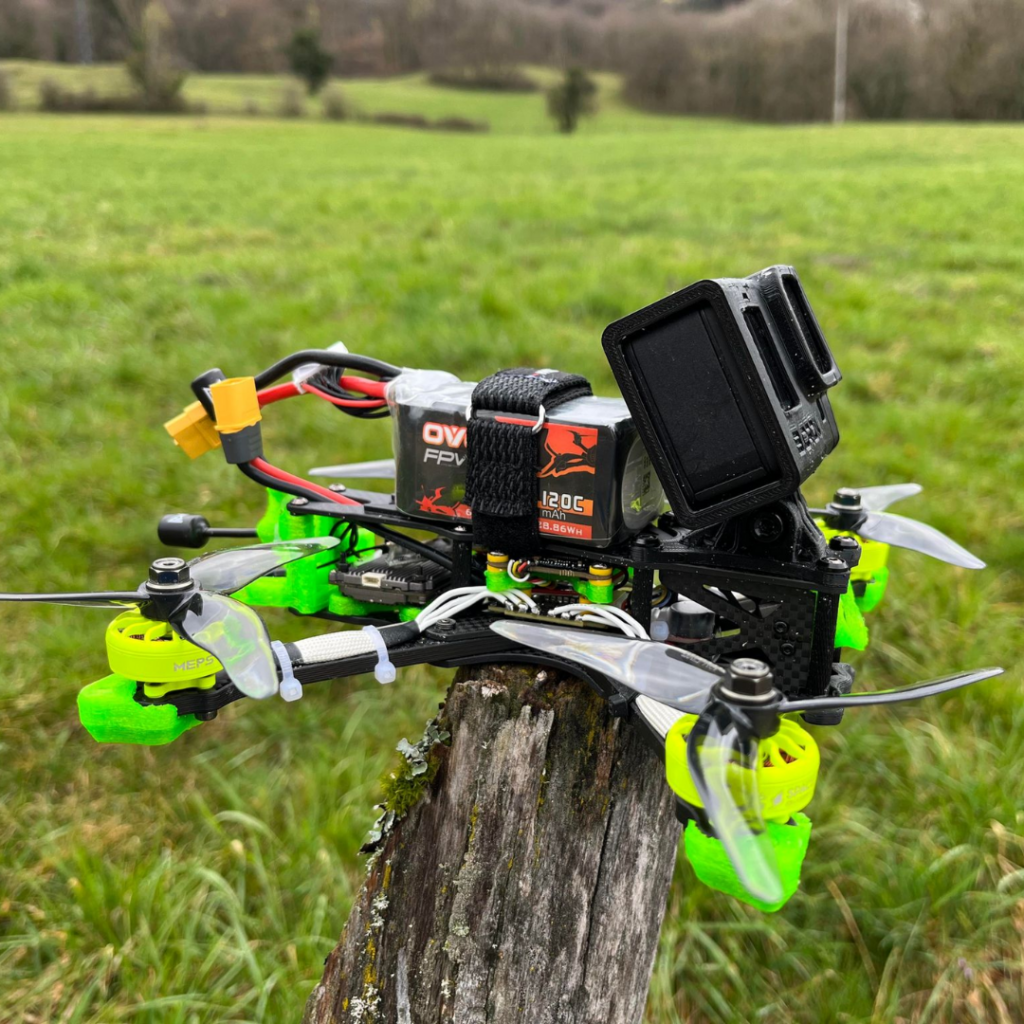
2.3 Always Maintain Line of Sight
It’s essential to keep your FPV drone in your line of sight when flying far away. Your video and radio signals might be readily disrupted by obstacles. Keep in mind your altitude to preserve line of sight. Avoid dangerous moves like flying beneath the tree line or to the other side of mountains unless you are knowledgeable and experienced. Look closely around the area before you take off for any potential blind spots that can interfere with your signals. Make sure your drone maintains line of sight by mentally planning and simulating the flight path.
2.4 Keep an Eye on the Battery Level
Running out of battery mid-flight is one of the main dangers of long-range FPV drone flight. Keep an eye on the battery level and adjust your flying schedule to avoid this from happening. Always make sure you have enough battery power to get back to where you started in a secure manner.
2.5 Use a GPS Tracker
For long-distance FPV drone flying, a GPS tracker can be a useful tool. It enables you to track the location of your drone in real-time, which can aid in its recovery in the event of an accident or flyaway.
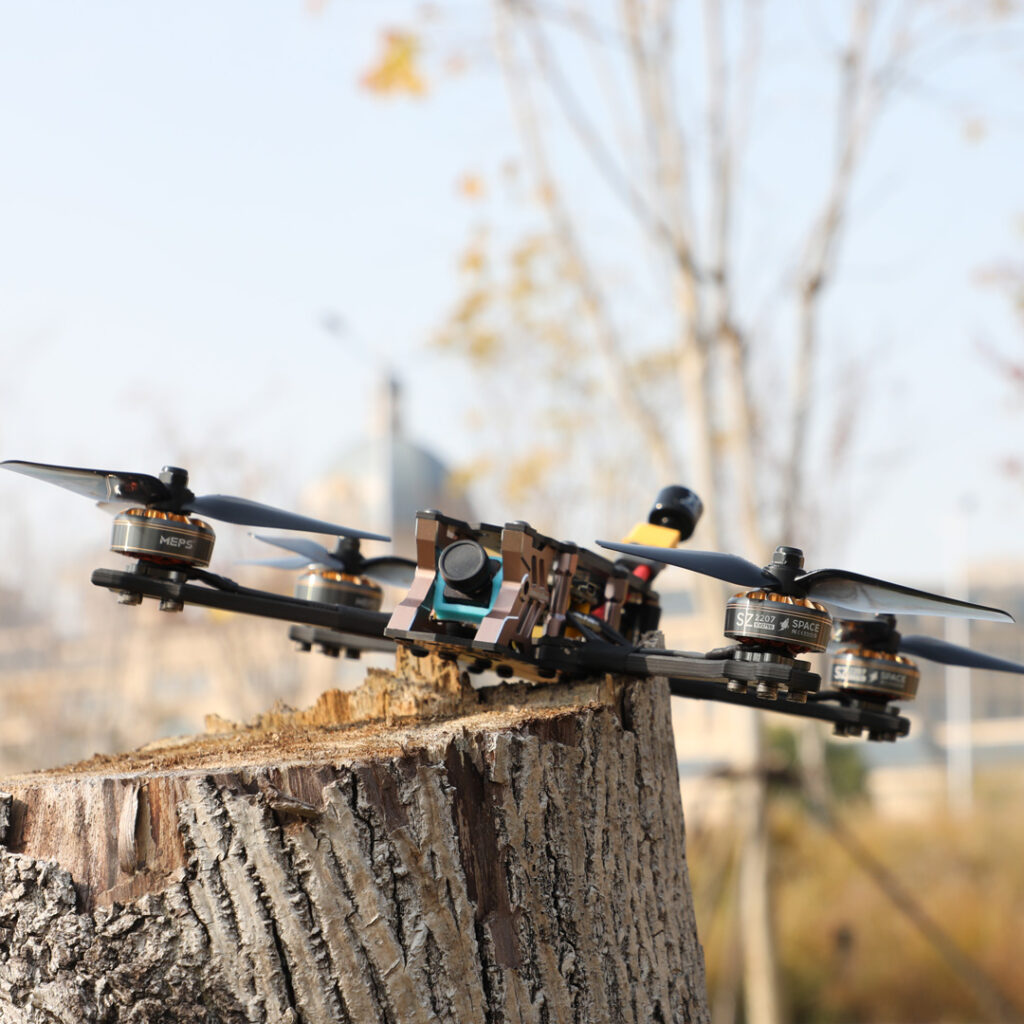
2.6 Be Aware of Weather Conditions
Your long-range FPV drone flying might be significantly impacted by weather conditions. Keep an eye out for any precipitation or other meteorological conditions that can have an impact on your flight, as well as the speed and direction of the wind. Always err on the side of caution and steer clear of flying during bad weather.
3. Is Long Range FPV Flying Legal in Your Country?
We must talk about whether long-range FPV flying is allowed because we don’t want to promote any unlawful actions. Different nations have different regulations governing the maximum distance an FPV drone can fly as well as the permitted VTX output power. In some locations, FPV flying is totally forbidden. Please abide by the laws of your nation and refrain from endangering yourself or others in order to ensure responsible flying.
Don’t fly in restricted airspace and make sure you are aware of any no-fly zones in your area, such as airports, military bases, or national parks.
Cover Image by Freepik

